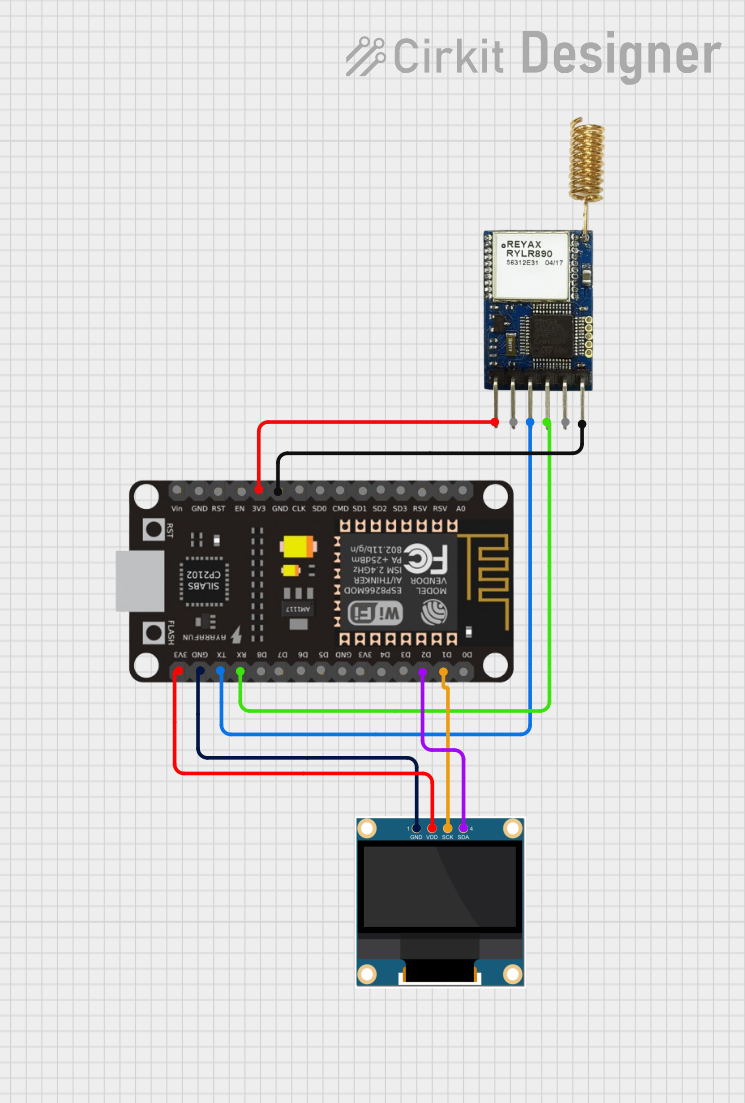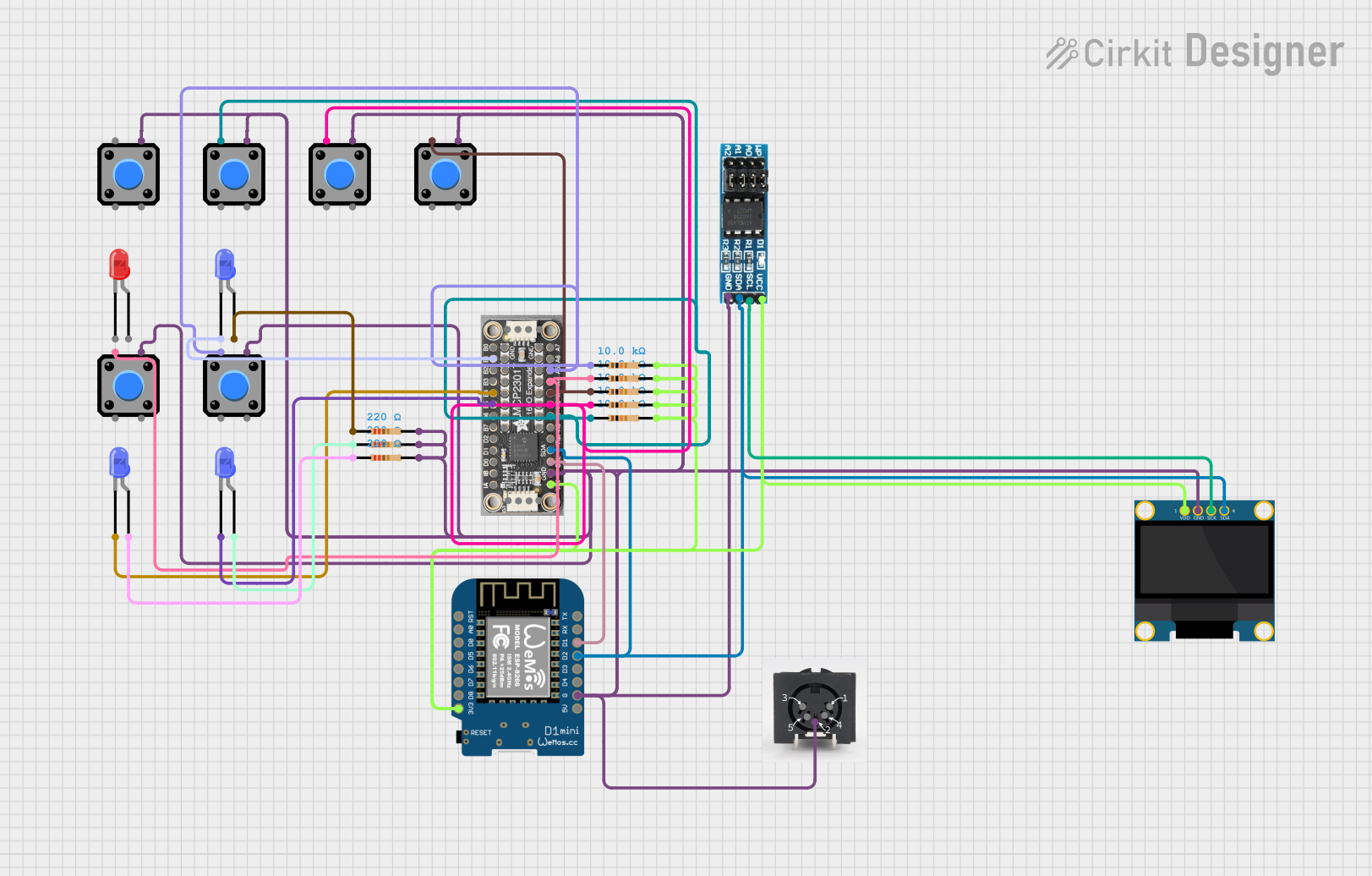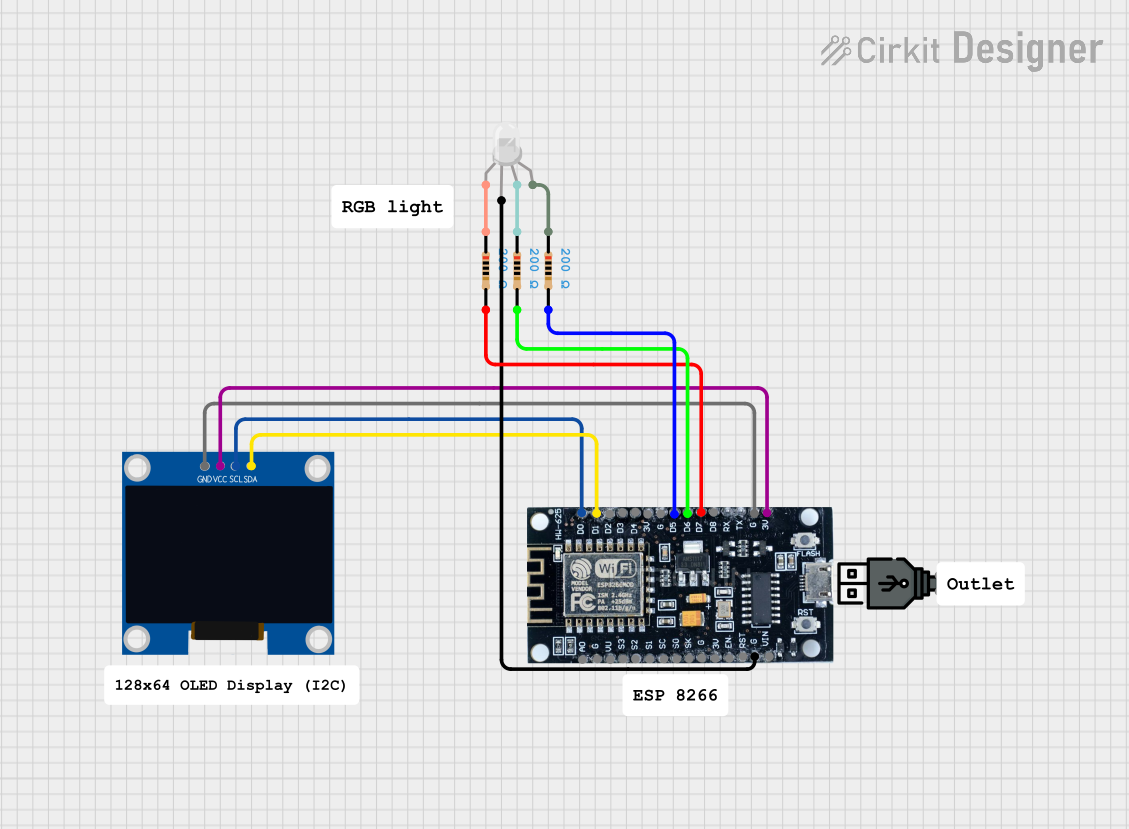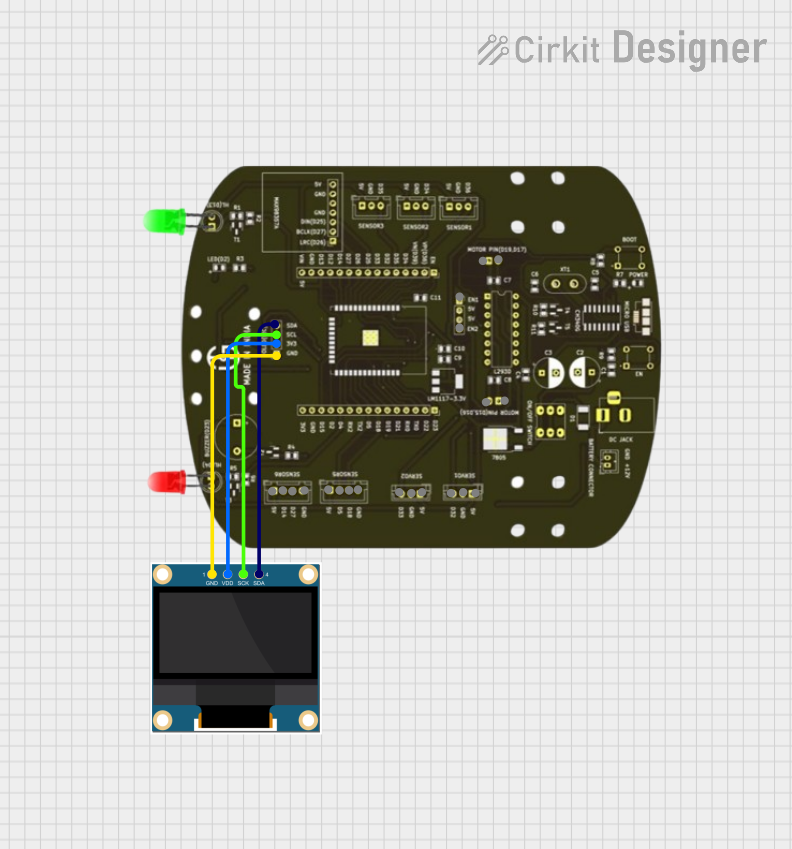
How to Use Blue 16x2 Character Slim OLED Module: Examples, Pinouts, and Specs

 Design with Blue 16x2 Character Slim OLED Module in Cirkit Designer
Design with Blue 16x2 Character Slim OLED Module in Cirkit DesignerIntroduction
The Blue 16x2 Character Slim OLED Module (Manufacturer Part ID: NHD-0216CW-AB3) by Newhaven Display is a compact and versatile display module designed for embedded systems. It features a 16x2 character layout, utilizing OLED technology to deliver high contrast, wide viewing angles, and low power consumption. This module is ideal for applications requiring clear text display in compact spaces, such as industrial control panels, consumer electronics, and IoT devices.
Explore Projects Built with Blue 16x2 Character Slim OLED Module

 Open Project in Cirkit Designer
Open Project in Cirkit Designer
 Open Project in Cirkit Designer
Open Project in Cirkit Designer
 Open Project in Cirkit Designer
Open Project in Cirkit Designer
 Open Project in Cirkit Designer
Open Project in Cirkit DesignerExplore Projects Built with Blue 16x2 Character Slim OLED Module

 Open Project in Cirkit Designer
Open Project in Cirkit Designer
 Open Project in Cirkit Designer
Open Project in Cirkit Designer
 Open Project in Cirkit Designer
Open Project in Cirkit Designer
 Open Project in Cirkit Designer
Open Project in Cirkit DesignerCommon Applications
- Embedded systems and microcontroller projects
- Industrial control panels
- Consumer electronics (e.g., home appliances)
- IoT devices and smart home systems
- Portable medical devices
Technical Specifications
Key Technical Details
| Parameter | Value |
|---|---|
| Display Type | OLED (Organic Light Emitting Diode) |
| Character Layout | 16x2 (16 characters per line, 2 lines) |
| Display Color | Blue |
| Interface | I²C |
| Operating Voltage | 3.3V or 5V (selectable via jumper) |
| Current Consumption | ~15mA (typical) |
| Viewing Angle | >160° |
| Operating Temperature | -40°C to +80°C |
| Dimensions (L x W x H) | 80.0mm x 36.0mm x 10.0mm |
| Weight | ~25g |
Pin Configuration and Descriptions
The module features a 4-pin interface for I²C communication. Below is the pinout:
| Pin Number | Pin Name | Description |
|---|---|---|
| 1 | GND | Ground (0V reference) |
| 2 | VCC | Power supply (3.3V or 5V) |
| 3 | SDA | Serial Data Line for I²C communication |
| 4 | SCL | Serial Clock Line for I²C communication |
Usage Instructions
How to Use the Component in a Circuit
- Power Supply: Connect the VCC pin to a 3.3V or 5V power source, depending on the jumper configuration. Ensure the GND pin is connected to the ground of your circuit.
- I²C Communication: Connect the SDA and SCL pins to the corresponding I²C pins on your microcontroller. Pull-up resistors (typically 4.7kΩ) may be required on the SDA and SCL lines if not already present.
- Initialization: Use the appropriate I²C address (default:
0x3C) to communicate with the module. Refer to the datasheet for additional commands and configuration options.
Important Considerations and Best Practices
- Voltage Selection: Ensure the jumper on the module is set correctly for your power supply voltage (3.3V or 5V).
- I²C Address Conflicts: If multiple I²C devices are connected, ensure they have unique addresses to avoid communication conflicts.
- Mounting: Use appropriate standoffs or enclosures to secure the module and protect it from mechanical stress.
- ESD Protection: Handle the module with care to avoid electrostatic discharge, which can damage the OLED display.
Example Code for Arduino UNO
Below is an example of how to interface the module with an Arduino UNO using the Adafruit SSD1306 library:
#include <Wire.h>
#include <Adafruit_GFX.h>
#include <Adafruit_SSD1306.h>
// Define the OLED display dimensions
#define SCREEN_WIDTH 128
#define SCREEN_HEIGHT 32
// Create an SSD1306 display object (I2C address 0x3C)
Adafruit_SSD1306 display(SCREEN_WIDTH, SCREEN_HEIGHT, &Wire, -1);
void setup() {
// Initialize serial communication for debugging
Serial.begin(9600);
// Initialize the OLED display
if (!display.begin(SSD1306_I2C_ADDRESS, 0x3C)) {
Serial.println(F("OLED initialization failed!"));
while (true); // Halt execution if initialization fails
}
// Clear the display buffer
display.clearDisplay();
// Display a welcome message
display.setTextSize(1); // Set text size to 1 (smallest)
display.setTextColor(SSD1306_WHITE); // Set text color to white
display.setCursor(0, 0); // Set cursor to top-left corner
display.println(F("Hello, World!")); // Print message
display.display(); // Update the display with the buffer content
}
void loop() {
// No actions in the loop for this example
}
Notes:
- Install the Adafruit GFX and Adafruit SSD1306 libraries via the Arduino Library Manager before running the code.
- Modify the
SCREEN_WIDTHandSCREEN_HEIGHTvalues if using a different display size.
Troubleshooting and FAQs
Common Issues and Solutions
Display Not Turning On:
- Verify the power supply voltage and ensure the jumper is set correctly.
- Check all connections for loose wires or incorrect pin assignments.
No Text or Graphics Displayed:
- Ensure the I²C address (
0x3Cby default) matches the address in your code. - Confirm that pull-up resistors are present on the SDA and SCL lines.
- Ensure the I²C address (
Flickering or Unstable Display:
- Check for noise or interference on the I²C lines.
- Use shorter wires and ensure proper grounding.
I²C Communication Errors:
- Verify that no other devices on the I²C bus share the same address.
- Ensure the microcontroller's I²C pins are configured correctly.
FAQs
Q: Can this module display custom characters?
A: Yes, the module supports custom character generation. Refer to the datasheet for details on creating and uploading custom characters.
Q: Is the module compatible with 3.3V microcontrollers like ESP32?
A: Yes, the module is compatible with both 3.3V and 5V systems. Ensure the voltage jumper is set accordingly.
Q: What is the typical lifespan of the OLED display?
A: The OLED display has a typical lifespan of 50,000 hours under normal operating conditions.
Q: Can I use this module with SPI instead of I²C?
A: No, this module supports only I²C communication.
By following this documentation, you can effectively integrate the Blue 16x2 Character Slim OLED Module into your projects and troubleshoot common issues with ease.